Dry Needling
Dry needling is a technique that acupuncturists, physical therapists and other trained healthcare providers use to treat musculoskeletal pain and movement issues. It’s almost always used as part of a larger pain management plan that could include exercise, stretching, massage and other techniques. During this treatment, a provider inserts very thin needles through your skin to treat underlying myofascial trigger points.
In the word “myofascial,†“myo†means “muscle.†Fascia is the thin, white connective tissue wrapped around your muscles.
Trigger points are knotted, tender areas that develop in your muscles. These trigger points are highly sensitive and can be painful when touched. Sometimes, a trigger point may be near the location of your pain. But they’re also often the cause of referred pain. Referred pain is pain that affects another part of your body.
Physical therapists use needles to alleviate your trigger points. When dry needling is applied to your muscles and tissues, it can decrease tightness, increase blood flow and reduce local and referred pain. Providers use solid needles that don’t contain any kind of medication. This is why the technique is called “dry.†Nothing is injected into your body. Trigger point injections are different. They contain medicine and are performed by a physician.
Other names for dry needling are trigger point dry needling and intramuscular stimulation.
How does dry needling work?
When your muscle is overused, it goes into an energy crisis where the muscle fibers aren’t getting an adequate blood supply. When they don’t get the normal blood supply, they don’t get the oxygen and nutrients that allow your muscle to go back to its normal resting state.
When this happens, the tissue near your trigger point becomes more acidic. Your nerves are sensitized, which makes the area sore and painful.
Stimulating a trigger point with a needle helps draw normal blood supply back to flush out the area and release tension. The prick sensation can also fire off nerve fibers that stimulate your brain to release endorphins, your body’s homemade pain medication.
Once your therapist locates a trigger point, they’ll insert a needle through your skin directly into it. They might move the needle around a little to try to get what’s called a local twitch response — a quick spasm of your muscle. This reaction can be a good sign that your muscle is reacting.
Some people feel improvement in their pain and mobility almost immediately after a dry needling session. For others, it takes more than one session.
Does dry needling hurt?
Trigger points are usually painful to the touch. So, before the needling, you may experience some pain while your provider is locating the trigger point.
You may also feel discomfort during the needling. Sometimes, people don’t feel the needle going in because it’s so small, but other times, people will feel a prick. When the needle is in the trigger point, it can be painful and cause a twitch response. Afterward, you may feel tightness or soreness near the insertion site, but it’s important to keep moving and stretching.
What does dry needling do?
Dry needling may help relieve pain and increase your range of motion. Conditions that dry needling may treat include:
- Joint issues
- Disk issues
- Tendonitis
- Migraine and tension-type headaches
- Jaw and mouth problems, such as temporomandibular joint (TMJ) disorders
- Whiplash
- Repetitive motion disorders, such as carpal tunnel syndrome
- Spinal issues
- Pelvic pain
- Night cramps
- Phantom limb pain
- Postherpetic neuralgia, a complication of shingles
Dry needling used in a treatment
Your therapist will decide if dry needling will be a good option for you. Not everyone is suited for dry needling.
The dry needling forms a part of a therapy session. Other treatment techniques will be incorporated such as myofascial release, trigger point therapy and other modalities of treatment.
There’s no need to be afraid of dry needling
If the needling at any time feels uncomfortable for you your therapist will remove the needles immediately. However, for most people needling isn’t a particularly painful experience, but rather a very relieving and effective treatment for their pain. In some cases people will prefer needles over massage as it is less painful, especially when treating trigger points (knots).






